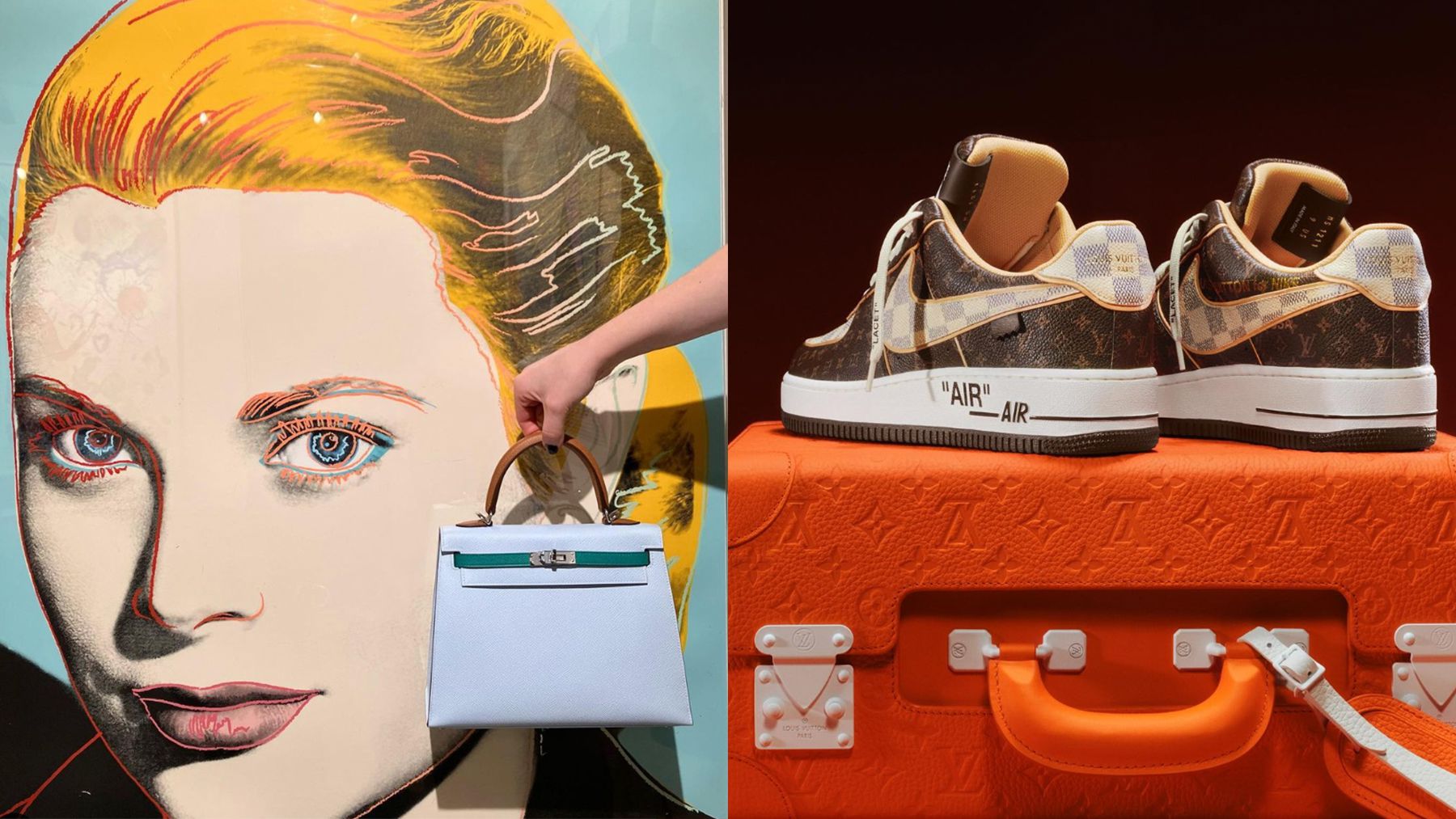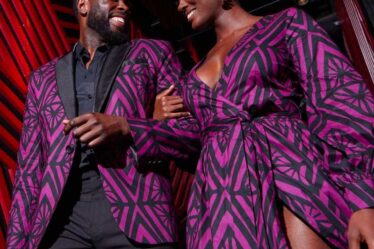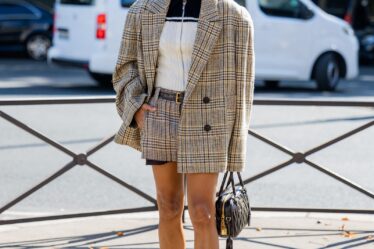

As a former style editor at Vogue and the New York Times’ T magazine, Edward Barsamian has long been acquainted with auction houses like Christie’s, Sotheby’s and Phillips. But in 2019, while working for Victoria Beckham — after she partnered with Sotheby’s to display Old Masters paintings in her Mayfair boutique and host a New York dinner — he was newly intrigued.
He signed up for houses’ newsletters, and after receiving an email about a Christie’s handbag auction mid-pandemic, Barsamian went on to snag a Ralph Lauren Ricky bag in midnight blue for a tenth of its retail value.
“I’ve done the eBay thing before … but there was something exhilarating about winning at auction,” said Barsamian. Since, he’s purchased more, including ‘90s Chanel cashmere shirts and Space Invader and Kaws sculptures, all at auction.
Barsamian is exactly the type of shopper auction houses want in its next generation of collectors. The auction house core customer is traditionally older, hovering around aged 60, said Josh Pullan, Sotheby’s head of global luxury. To bring Millennials and Gen-Z into the auction universe, houses like Christie’s and Sotheby’s are using fashion and “buy now” formats in hopes that Chanel buyers will one day become Basquiat bidders.
It’s not just at the top: fashion orders are up 84 percent year-over-year at mid-market auction app 1stDibs, which primarily sells furniture, after putting renewed focus on the category.
“Maybe first they’re buying a bag, then they’re buying a photograph that’s $10,000, then the next thing you know, they’re coming into the saleroom and participating in a live auction,” said Rachel Koffsky, Christie’s international head of handbags and accessories.
It comes at a time when fashion auctions are seeing renewed public attention, too. Joan Didion’s Celine sunglasses fetched $27,000 via an auction on online auction platform Bidsquare, and Karl Lagerfeld’s much-publicised estate brought in over $18.5 million for Sotheby’s. At Christie’s, Andre Leon Talley’s estate fetched nearly $4 million last month, after it was displayed during a buzzy fashion month showcase in Paris and a party in New York. This week, Sotheby’s announced the auction of Michael Jordan’s “Last Dance’’ sneakers — predicted to sell for between $2 million and $4 million.
“[Before] you would see fashion connoisseurs and the cognoscenti clamour for that … 1679291167 you’re seeing a wider audience come,” said Barsamian, who attended the party prior to Talley’s auction.
Though fashion categories are becoming more important to auction businesses for most, they still only make up a fraction of sales. For Christie’s, luxury (which, beyond fashion, includes cars, wine and spirits, handbags, watches and jewellery) accounted for 12 percent of total sales: $998 million of its $8.4 billion. In 2019, Sotheby’s announced its intent to make luxury half of its business. Last year, luxury made up $2.3 billion of the group’s overall $6.8 billion in sales, nearly double the size of its luxury sales in 2021. Forced to rely more on digital — the pandemic helped lay further groundwork for growth in the category: online sales accounted for two-thirds of Sotheby’s luxury business in 2022.
“[The auction business] is a big oil tanker of a revenue channel. It’s not common that we see this sort of heat in the market,” said Mattew Rubinger, 1stDibs chief commercial officer and the former Christie’s global head of marketing. “What’s really exciting is that fashion is a bit of an outlier to that story.”
Rising Luxury Demand
It was in the 2010s that houses started seeing handbags as marketing tools rather than just the “tail” tacked onto big lots. Existing handbag collectors bought in, according to Rubinger, as did newcomers and art collectors.
“Auction houses quickly realised their power,” said Sebastian Duthy, director of London-based data analysis firm Art Market Research. “We’ve seen that on steroids with social media and the noise you can produce has grown.”
Today, auction houses see the same interest that drives consumers to resale platforms like Depop and The RealReal for Tom Ford-era Gucci and Phoebe Philo-designed Celine as setting the stage for their own growth.
“The pandemic changed the way a lot of people do what we call shopping,” said Koffsky. “When they’re buying things they’re also thinking about the circular economy. ‘Is there a resale value, is this something that I could give to the next generation?’”
Consumers are increasingly looking at luxury fashion as an investment opportunity, said Federica Lovato, senior partner, EMEA fashion and luxury lead at Bain. Rising prices and product shortages in luxury have also made auction houses into a key channel for access to top-tier goods, said Lovato, adding that today, fashion is often “artified,” endowed with a similar status as a painting or sculpture.
“[People] like to show that they belong to the creative scene with the cool kids … Fear of being left out is driving it,” said Roman Kräussl, a professor of finance at University of Luxembourg and visiting fellow at Stanford University’s Hoover Institution think tank, whose research focuses on alternative investments and art.
Reaching New Audiences
Auction houses are also courting a new generation. Krussel points to the early frenzy around the NFT market as evidence that young people are craving new ways to invest. The aftershocks of the crypto crash, he theorises, could end up driving buyers to more tangible assets.
“People realised you can lose a lot,” he said. “I think a bit of a trend is to have it … to really wear it, feel it and own it.”
Sotheby’s and Christie’s both launched streetwear divisions in 2021 and 2022, respectively. Along with accessories, it’s helping lure in young buyers: in 2022, 52 percent of Sotheby’s streetwear buyers and 33 percent of handbag and accessory buyers were under the age of 40. A strong indicator of demand, said Koffsky, luxury also has a high sell through rate of 88 percent, compared to 83 percent across Christie’s other categories.
Fashion, watches, jewellery and other wearables also represent a key aspect of houses’ expansion strategies in Asia — a region with big interest in luxury brands, and with a big potential market in its rising middle class.
Asian buyers already make up 35 percent of luxury sales for Sotheby’s and 43 percent for Christie’s. Sotheby’s is set to open a Maison in Hong Kong in 2024. Christie’s is opening a new headquarters in the city in Zaha Hadid’s Henderson Building, which will host its first year-round Asian saleroom in 2024.
To connect with these new consumers, houses are investing in their social strategies, which helps get consumers to sales, cocktail events or seminars, said Koffsky. Sotheby’s saw social engagement up 25 percent year-over-year after launching accounts on Asia’s Little Red Book and Douyin in 2022, as well as dedicated sneaker and style Instagram handles.
“At the end of the day, auction houses survive by moving a lot of products through the doors, and that’s what they will continue to do. They need to find those collectors,” said Duthy.
Still, Barsamian thinks there’s more to be done to reach plugged-in fashion consumers and accelerate business. He recommends auction houses tap more experts with built-in online audiences and lean into their archives and authority to create content.
“They’re not properly utilising their social channels and platforms in order to speak to [young, fashion conscious] audiences … there’s a huge demand for archive, you see it all over TikTok” he said.



